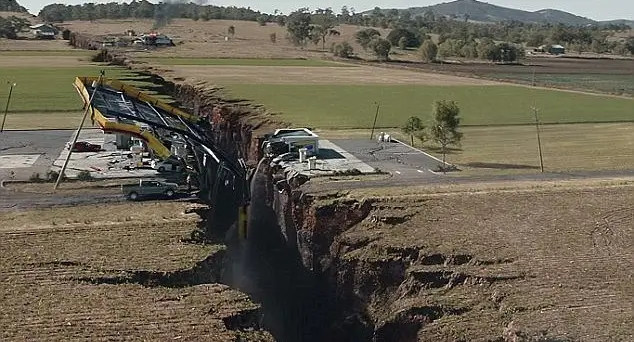
Understanding Earthquakes:
Ever wondered why the ground suddenly decides to become a trampoline? It all boils down to a playground fight of sorts, way underneath our feet. Giant slabs of rock called tectonic plates are constantly shoving and grinding against each other. When the pressure builds up too much, SNAP! One plate slips past the other, releasing a burst of energy that ripples through the Earth – boom, an earthquake!
Earthquakes Facts:
-
More frequent than you think: The Earth experiences an estimated 500,000 earthquakes each year, but most are too small to feel! Only around 100,000 are strong enough to be detected by instruments, and just 100 cause damage.
-
Not just ground movement: While shaking is the most well-known effect, earthquakes can also trigger tsunamis, landslides, and even changes in the Earth's rotation and atmosphere.
-
Silent tremors: Sometimes, earthquakes happen silently, meaning they don't generate noticeable shaking at the surface, even though seismic instruments pick them up. These can be just as powerful as earthquakes with strong shaking.
-
Animal intuition: Some animals seem to have an uncanny ability to sense an impending earthquake, exhibiting unusual behavior like restlessness or vocalizations.
-
Earthquake lights: Eerie glowing lights have been witnessed before and during some earthquakes, with theories attributing them to electrical phenomena generated by the shaking.
-
Fastest-moving things on Earth: The ground during a very large earthquake can actually move faster than the speed of sound!
-
Earthquakes can create new islands: When the seafloor is uplifted during an earthquake, it can rise above the water's surface, creating new islands.
-
Longest earthquake ever recorded: The 1960 Chile earthquake lasted for an astonishing 14 minutes and 55 seconds, the longest ever recorded by instrument.
-
Earthquakes can make mountains grow: Over time, repeated earthquakes can push and fold rock layers, gradually forming even the tallest mountains.
-
Earthquake prediction remains a challenge: Despite advances in technology, accurately predicting earthquakes still remains a scientific puzzle. However, research on earthquake warning systems continues to improve.
Famous Earthquakes:
-
Great East Japan Earthquake (2011):
- Location: Off the Pacific coast of Tōhoku, Japan.
- Magnitude: 9.0–9.1
- Impact: Resulted in a massive tsunami causing extensive damage and the Fukushima Daiichi nuclear disaster.
-
Indian Ocean Earthquake (2004):
- Location: Off the west coast of northern Sumatra, Indonesia.
- Magnitude: 9.1–9.3
- Impact: Generated a series of devastating tsunamis, affecting multiple countries and causing widespread destruction.
-
Alaska Earthquake (1964):
- Location: Prince William Sound region, Alaska, USA.
- Magnitude: 9.2
- Impact: One of the most powerful earthquakes in North American history, causing significant damage in Alaska and triggering tsunamis that affected coastal areas as far away as California.
-
Chilean Earthquake (1960):
- Location: Valdivia, Chile.
- Magnitude: 9.5
- Impact: The most powerful earthquake ever recorded, leading to widespread damage in Chile and generating tsunamis that affected Hawaii, Japan, and the Philippines.
-
Sumatra-Andaman Earthquake (2005):
- Location: Off the west coast of northern Sumatra, Indonesia.
- Magnitude: 9.1–9.3
- Impact: Similar to the 2004 Indian Ocean earthquake, this event generated tsunamis affecting multiple countries.
-
Kobe Earthquake (1995):
- Location: Kobe, Japan.
- Magnitude: 6.9
- Impact: Despite a lower magnitude, it caused extensive damage due to its proximity to densely populated areas, resulting in over 6,000 deaths.
-
San Francisco Earthquake (1906):
- Location: San Francisco, California, USA.
- Magnitude: Estimated 7.8
- Impact: Infamous for the widespread destruction it caused, particularly due to the subsequent fires. It remains one of the most significant earthquakes in U.S. history.
-
Haiti Earthquake (2010):
- Location: Near Léogâne, Haiti.
- Magnitude: 7.0
- Impact: Devastated the capital city of Port-au-Prince, causing widespread destruction and a significant humanitarian crisis.
-
Mexico City Earthquake (1985):
- Location: Michoacán region, Mexico.
- Magnitude: 8.1
- Impact: Struck Mexico City, resulting in extensive damage and a large number of casualties.
-
Nepal Earthquake (2015):
- Location: Near the capital city of Kathmandu, Nepal.
- Magnitude: 7.8
- Impact: Caused widespread destruction in Nepal and neighboring countries, leading to significant loss of life and cultural heritage.
Measuring the Monster:
So, how do we know which earthquakes are just grumpy rumbles and which are potential building-breakers? We use two scales: the Richter scale, which tells us how much energy the earthquake released, like measuring cookie dough tremors vs. lava cake quakes. And the Mercalli scale, which judges the shaking intensity felt by people – think Jello jiggle vs. disco dance floor.
For video demonstration, please check the following video on youtube
